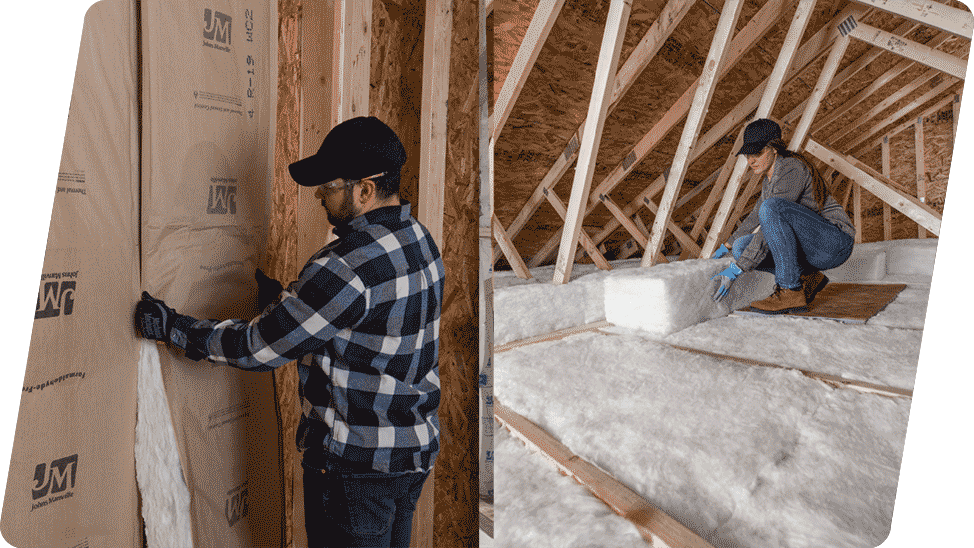When it comes to insulating your home, one important decision to make is whether to use faced or unfaced insulation in the ceiling. Your choice can significantly impact your home’s energy efficiency and overall comfort. In this article, we will delve into the key factors to consider when deciding between faced or unfaced insulation for your ceiling and guide you through the benefits and drawbacks of each option.

The Basics of Faced or Unfaced Insulation
Before we dive into the details, let’s clarify what faced and unfaced insulation are:
- Faced Insulation: Faced insulation comes with a vapor barrier on one side. This vapor barrier is typically made of paper or foil and serves to prevent moisture from entering your home through the insulation.
- Unfaced Insulation: Unfaced insulation, on the other hand, does not have a vapor barrier. It’s essentially just the insulation material without any additional layers.
Why Choose Faced Insulation?
Heading: Advantages of Faced Insulation in Ceilings
Faced insulation can be a suitable choice for your ceiling for several reasons:
- Moisture Control: The vapor barrier in faced insulation helps to control moisture and prevent it from entering your home. This can be particularly important in areas with high humidity or in climates prone to condensation issues.
- Thermal Efficiency: Faced insulation with a vapor barrier can provide excellent thermal efficiency by creating a sealed barrier. This helps keep your home cooler in the summer and warmer in the winter.
- Easier Installation: The paper or foil facing on this type of insulation makes it easier to handle and install without the need for additional materials like plastic sheeting.
When to Choose Unfaced Insulation?
Heading: Benefits of Unfaced Insulation in Ceilings
Unfaced insulation also has its advantages and can be the right choice for specific situations:
- Versatility: Unfaced insulation is highly versatile and can be used in various areas of your home, not just in ceilings. It’s an excellent choice if you have excess insulation that you’d like to repurpose.
- Customized Vapor Barrier: If you already have a vapor barrier in place or need to customize the vapor control layer, unfaced insulation gives you more control over this aspect of your insulation.
- Better Ventilation: Unfaced insulation can be a good option in attic spaces where proper ventilation is critical. It allows moisture to escape, reducing the risk of mold and mildew.
Factors to Consider When Choosing
Heading: Making the Right Decision
The decision between faced and unfaced insulation in your ceiling should be based on the following factors:
- Climate: Consider the climate of your location. Faced insulation is often a better choice in areas with high humidity or significant temperature fluctuations, while unfaced insulation can be more suitable in dry climates.
- Ventilation: Evaluate the ventilation in your attic or ceiling space. If proper ventilation is lacking, unfaced insulation can help maintain airflow, preventing moisture buildup.
- Existing Vapor Barriers: Check if there are existing vapor barriers in your home. If so, you may opt for unfaced insulation to avoid a double vapor barrier that can trap moisture.
- Installation Skill: Assess your DIY skills and comfort level with insulation installation. Faced insulation may be easier to work with for beginners, while experienced installers might prefer unfaced insulation for more customized solutions.
Read too: Is Installing A Ceiling Fan Hard
Conclusion
In the end, the choice between faced and unfaced insulation in your ceiling comes down to the unique characteristics of your home, your climate, and your specific needs. Both options have their advantages, and understanding these factors will help you make an informed decision. Whether you choose faced insulation for its moisture control and thermal efficiency or unfaced insulation for its versatility and ventilation benefits, insulating your ceiling is a crucial step toward a more energy-efficient and comfortable home. Make your choice wisely, and you’ll enjoy the benefits for years to come.